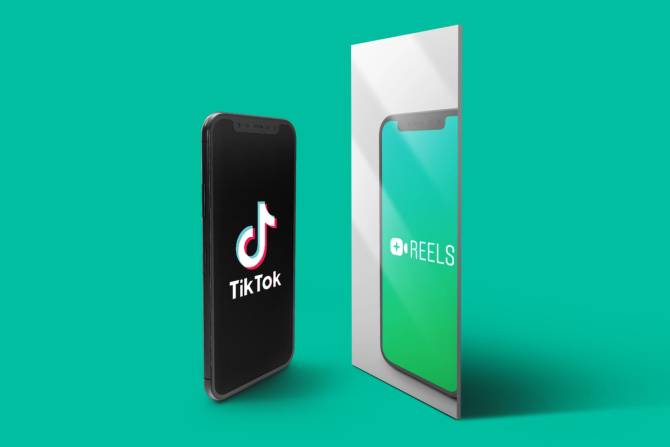I feel bad for Adam Mosseri. The head of Instagram has been public enemy No. 1 the last few weeks as the internet (and a couple of Kardashians) angrily yells to “make Instagram Instagram again.” There’s a cultural feeling that IG is just doing a TikTok impersonation lately, cutting back your friends’ photos in favor of recommended video content. We’re living in the Reels world now, where vertical short-form vids feel like the primary content type for two of the largest social networks.
Here’s the funny thing.
Instagram’s attempts to follow TikTok now give all brands a catalyst to start TikToking.
Seriously. Let me walk you through the thinking.
Instagram Reels, from 2020 to today
We’re only two years into Reels, but let’s go back to that first blog where Instagram announced the format and how it works:
“Reels invites you to create fun videos to share with your friends or anyone on Instagram. Record and edit 15-second multi-clip videos with audio, effects, and new creative tools. You can share reels with your followers on Feed, and, if you have a public account, make them available to the wider Instagram community through a new space in Explore. Reels in Explore offers anyone the chance to become a creator on Instagram and reach new audiences on a global stage.”
Yep, those seem like TikToks, as they always have. Back then, Reels were just an additional content format—something new for social media managers to play with, alongside images, carousels, videos, live, and everything else IG offers. Because Instagram’s feed was then primarily content from accounts a user followed, Reels were largely avoidable for a long time.
What’s changed: Reels went from just another Instagram content format to the primary content format. As of July, any new video posted to Instagram shorter than 15 minutes is automatically categorized as a Reel. The feed is riddled with Reels, escaping their Explore page home to infest every scroll on your primary feed. This is why the Kardashians are pissed.
Here’s the social media math of it all
Let’s be honest, brands: You’re pot-committed to Instagram. Over 200 million businesses are on the platform. You can’t jump off IG just because the format changed—you’ve spent too much time and money building a community there.
If you plan on having business success on Instagram, you better commit to Reels.
If we agree Reels and TikToks are basically the same, you better commit to TikTok.
Two platforms, one strategy
Instagram just gave social media managers a gift: content efficiency. Two of the largest platforms are encouraging the exact same type of content. Reels is just TikTok’s fellow—not, like, an evil version. Any Instagram Reel can succeed on TikTok. Any TikTok can succeed as an Instagram Reel.
Brands, you have my permission to copy/paste. Literally just toss your 9:16 short-form video content on both platforms and see what happens. Sure, there are plenty of tricky optimizations we can make, but as long as there’s a strong hook in the first three seconds, the content’s got a shot.
Those TikTok benefits
Dropping the same content on multiple platforms isn’t anything new; all social pros are familiar with recropping and recutting to make that image or video just right for another social network. The difference this time: TikTok is a content-recommendation engine.
Usually when brands toss content on a new social network they’ve gotta build up a follower base. Facebook, Twitter, the old Instagram: All are follow-based networks, where users primarily see content they’ve asked for by smashing the follow button. Historically, that makes adding a new platform to your social media mix an expensive endeavor—you’ve gotta get followers! If content falls on a network and no one is around to hear it, does it make a sound?
TikTok isn’t like that, though. Users primarily scroll the For You page, mostly comprising content the algorithm thinks you’d enjoy. You don’t need followers—TikTok’s gonna push your content to the right audiences automatically. Brands can dip their toes into TikTok through literally copy/pasting the content.
To recap: Instagram and TikTok feel like carbon copies of each other. For brands, this is a good thing—make your content work smarter by going from platform to platform. Go forth and make things, then get them everywhere.




